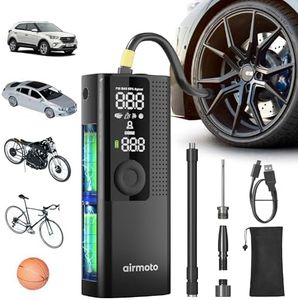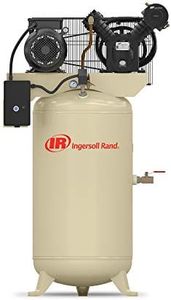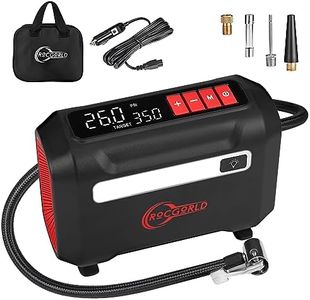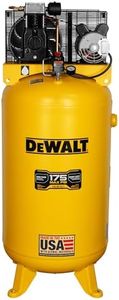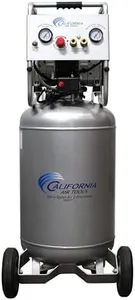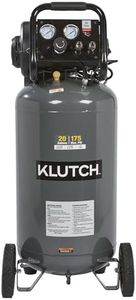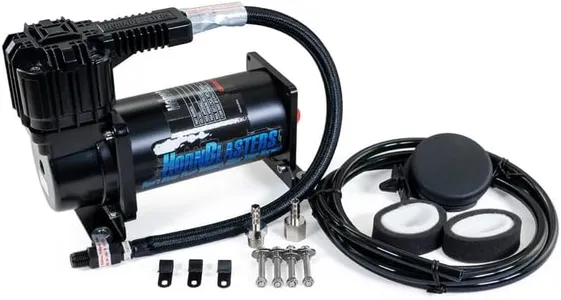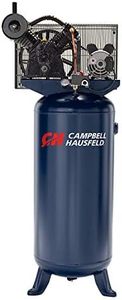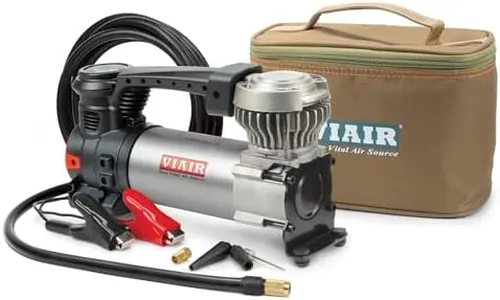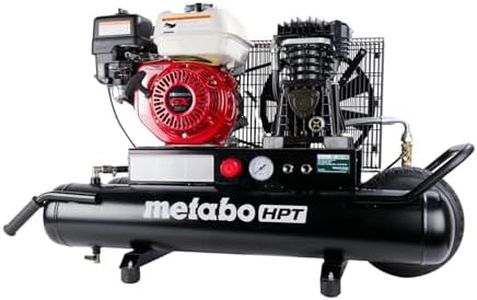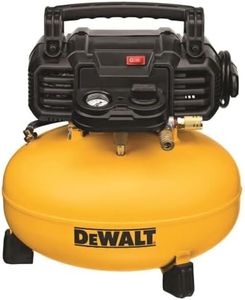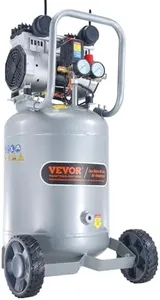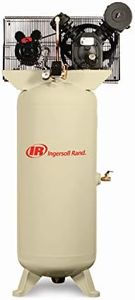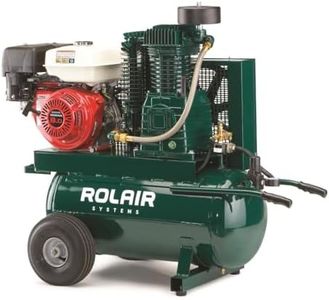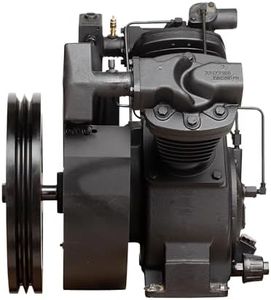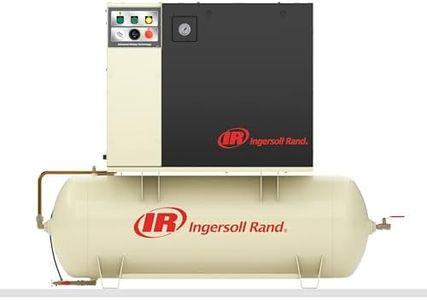10 Best Air Compressors 2025 in the United States
Our technology thoroughly searches through the online shopping world, reviewing hundreds of sites. We then process and analyze this information, updating in real-time to bring you the latest top-rated products. This way, you always get the best and most current options available.

Our Top Picks
Winner
Ingersoll Rand - Air Compressor 7.5HP 2 Stage (2475N7.5) 45465408
The Ingersoll Rand 7.5HP 2-Stage Air Compressor (2475N7.5) is a robust choice tailored for industrial applications, thanks to its durable cast iron construction and impressive long-life pump designed for over 15,000 hours of usage. With a maximum operating pressure of 175 PSI and an 80-gallon tank, it delivers substantial power and efficiency, making it suitable for demanding tasks like automotive service or heavy machinery operation.
One of the standout features of this compressor is its 100% continuous duty cycle, which allows for prolonged usage without downtime. This is especially beneficial for users who need a reliable air supply for extended periods. Additionally, the compressor operates on 230 volts and uses a corded electric power source, which is common in industrial settings.
Maintenance is made easier with an easy-to-service design that includes individually cast cylinders and a simplified crankshaft setup. Users will appreciate the All Season Select synthetic lubricant, which increases efficiency and extends service intervals to 2,000 hours, significantly reducing maintenance frequency compared to conventional lubricants. The noise level of 85 dB is relatively high, which could be a concern for those working in confined spaces or noise-sensitive environments. Proper hearing protection may be necessary during operation. Also, while the size and weight of the compressor lend to its stability and durability, it may not be the most portable option for users who require frequent relocation.
ROCGORLD R8 Tire Inflator Portable Air Compressor, DC 12V Air Compressor Portable with Large Dual Digital Screen, 3X Faster Inflation Air Pump for Car, Bike, Ball, Motor
Most important from
9380 reviews
The ROCGORLD R8 Tire Inflator Portable Air Compressor is designed for fast and convenient tire inflation, with a powerful cylinder capable of reaching up to 150 PSI. Its compact size, at only 2.79 x 4.92 x 6.49 inches and 2.16 pounds, makes it highly portable and easy to store, ideal for users who require a mobile solution for inflating car, bike, and sports equipment tires.
The dual digital display offers real-time and preset pressure values, making it user-friendly and eliminating guesswork during operation. The auto-stop feature adds convenience and safety by preventing overinflation. Additionally, its durability is supported by a high-quality construction and materials, including a lengthy 10FT power cord and 2FT hose that are resistant to damage.
The air compressor is corded electric, requiring a 12V DC power source, which means it cannot be powered directly from an AC wall plug, a limitation to consider. Noise level is relatively moderate at 69 dB, which might be noticeable but not overly disruptive. The product comes with a comprehensive set of accessories, enhancing its versatility. Notably, the absence of a battery and reliance on a cigarette adaptor for power may restrict usage in certain situations. Users in need of a compact, efficient, and user-friendly tire inflator may find the ROCGORLD R8 an excellent choice, provided they adhere to the power source requirements.
Most important from
9380 reviews
DEWALT 80 Gallon Vertical Air Compressor, 5 HP, 175 Max PSI, Single Stage, Oil Lube, 230V - High Performance Industrial Air Compressor for Professional Use - Durable and Efficient 80 Gallon Compressor
Most important from
14 reviews
The DEWALT 80 Gallon Vertical Air Compressor is designed for professional and heavy-duty use, making it a solid choice if you need a reliable, powerful machine for demanding tasks like bolting, tire inflation, and grinding. It features a strong 5 HP motor and can reach a high maximum pressure of 175 PSI, which means it can handle tools requiring substantial air pressure. The large 80-gallon tank is a big plus, providing plenty of air storage to reduce how often the compressor needs to run and refill, helping maintain steady performance. With airflow rates of 17 CFM at 40 PSI and 14.6 CFM at 90 PSI, it delivers consistent airflow suitable for various jobs.
Its vertical design can save some floor space, but keep in mind this unit is quite heavy (369 pounds) and not meant to be portable, so it’s best suited for a fixed workshop or garage. The compressor runs on 230 volts and is corded electric, which provides stable power but requires a proper electrical setup. An oil-lubed system ensures the compressor runs smoothly and lasts longer under regular use, though it will need periodic oil maintenance.
If you’re looking for a durable, industrial-grade air compressor with excellent pressure and airflow for professional tasks, this DEWALT model fits the bill well, provided you have the space and power requirements to support it.
